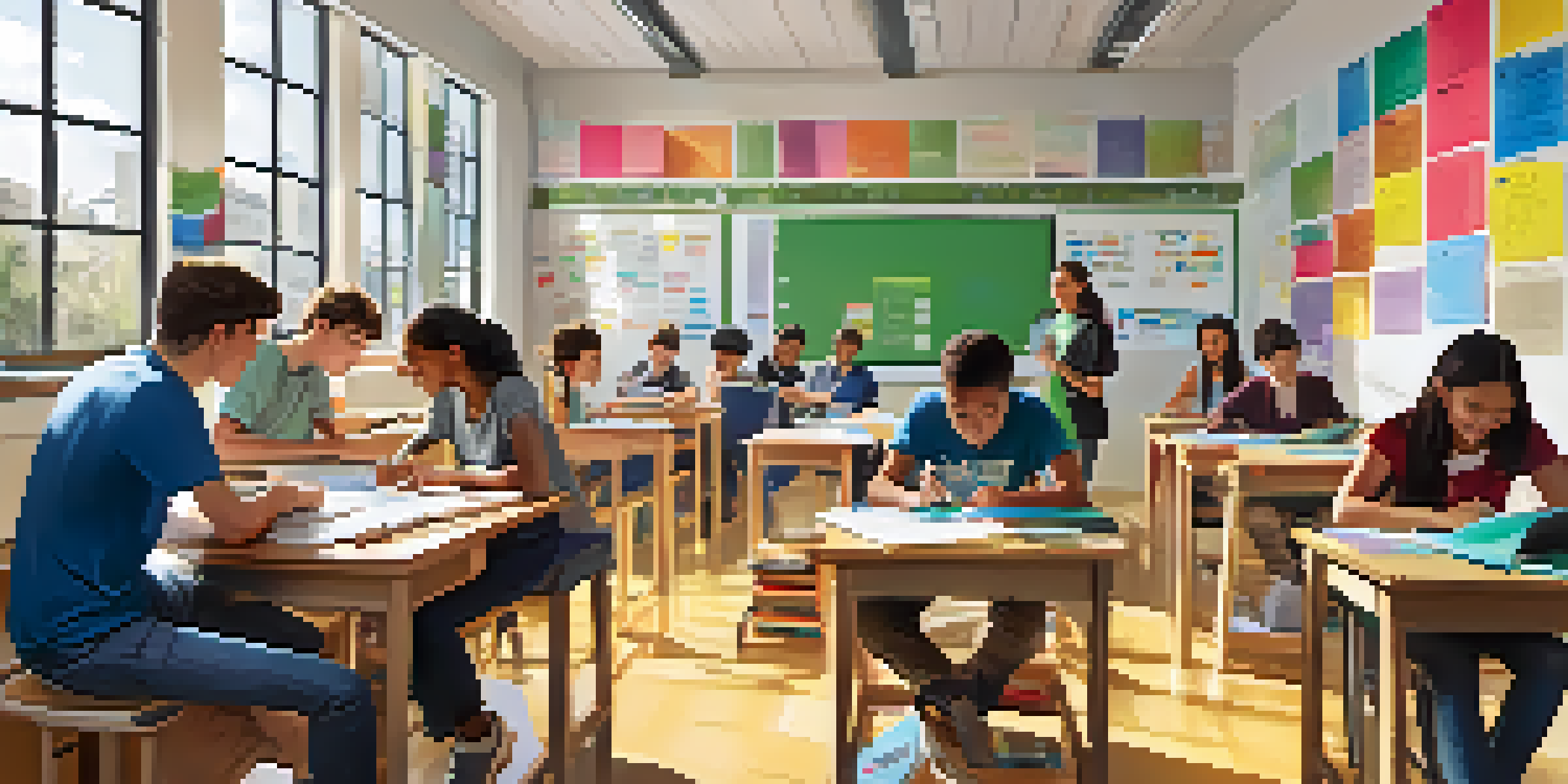Using Adaptive Learning to Foster Collaboration Among Students

Understanding Adaptive Learning in Education
Adaptive learning is a personalized educational approach that adjusts content based on a student's needs. Imagine a smart tutor that learns your strengths and weaknesses, tailoring lessons accordingly. This method not only optimizes learning but also creates an environment where students can collaborate effectively.
The Role of Collaboration in Learning
Collaboration is essential in education; it allows students to share ideas and learn from one another. When students work together, they build communication skills and deepen their understanding of the subject matter. This interaction fosters a sense of community, making learning more enjoyable and impactful.
Adaptive Learning Personalizes Education
Adaptive learning tailors educational content to individual student needs, enhancing the learning experience.
How Adaptive Learning Supports Collaboration
By using adaptive learning platforms, students can access resources that complement their learning styles. For example, a visual learner might receive infographics while an auditory learner gets podcasts. This personalized approach encourages collaboration as students share their unique resources and insights with each other.
Creating Diverse Learning Groups
Adaptive learning allows educators to form diverse groups based on student strengths and weaknesses. When students with different skills collaborate, they can fill in each other's gaps, promoting a deeper understanding. This diversity not only enhances learning but also prepares students for real-world teamwork.
Collaboration Enhances Learning Outcomes
Working together allows students to share insights and deepen their understanding, fostering community and engagement.
Facilitating Peer Feedback and Support
Adaptive learning platforms often include features for peer feedback, encouraging students to review each other's work. This process not only helps students learn from their mistakes but also fosters a culture of support and encouragement. When students feel valued and heard, collaboration flourishes.
Utilizing Technology to Enhance Collaboration
Modern technology plays a crucial role in adaptive learning and collaboration. Tools like discussion forums, collaborative documents, and video conferencing enable students to connect and work together, even from a distance. This flexibility opens up new avenues for collaboration, making learning more accessible and engaging.
Technology Fuels Collaborative Learning
Modern tools enable flexible collaboration, making it easier for students to connect and work together from anywhere.
Measuring the Success of Collaborative Learning
To gauge the effectiveness of collaboration, educators can track student progress and engagement through adaptive learning analytics. These insights help identify what works and what doesn’t, allowing for continuous improvement. By measuring success, educators can refine their strategies to foster even more collaboration.
The Future of Adaptive Learning and Collaboration
As technology continues to evolve, the potential for adaptive learning to enhance collaboration is limitless. Future innovations may lead to even more personalized and interactive experiences for students. By embracing these changes, educators can create a collaborative learning environment that prepares students for success in an interconnected world.